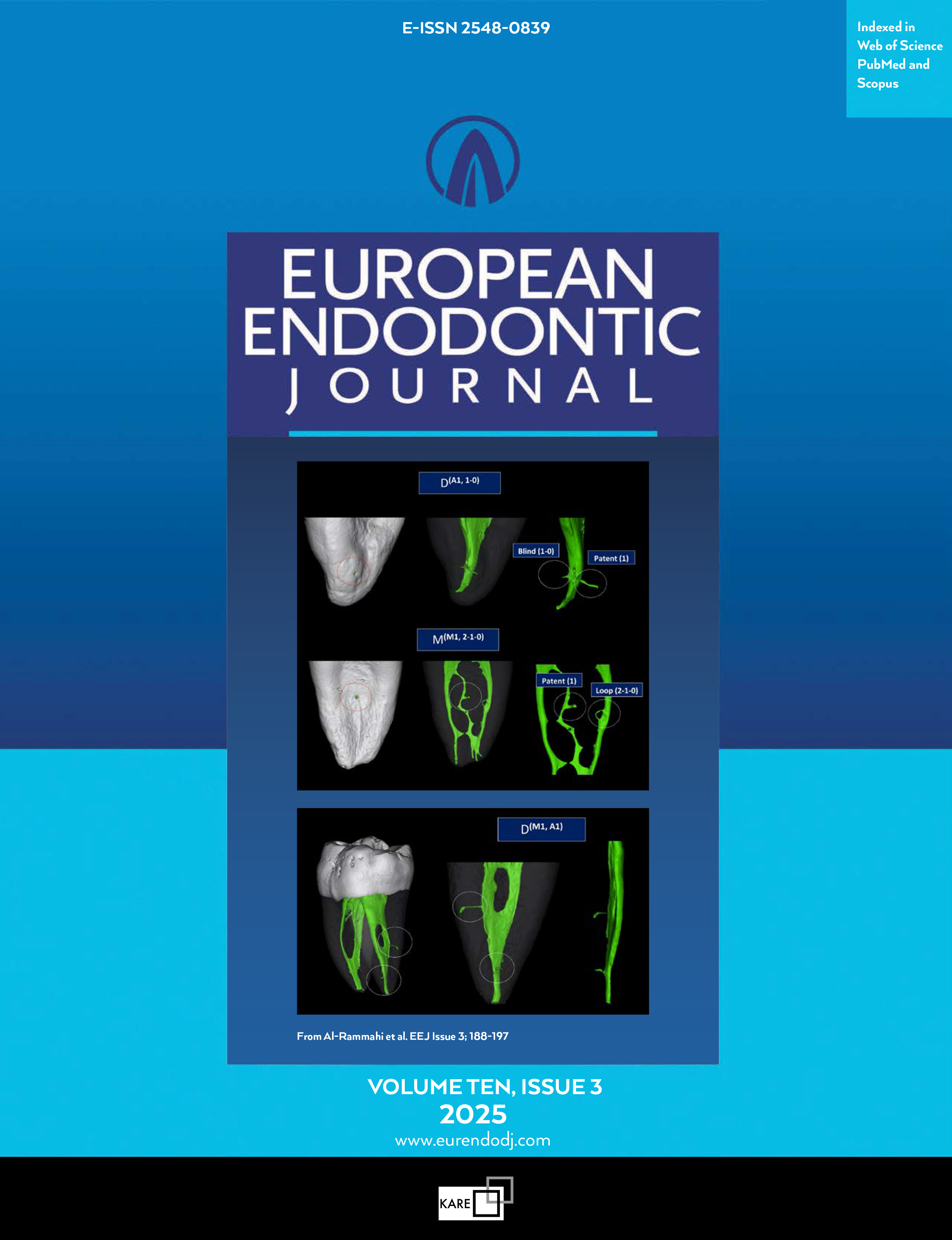Metrics
2024 IMPACT FACTOR
5 year Impact Factor
Eigenfactor Score
2024 CiteScore
Journal Citation Reports
(Clarivate 2025, JIF Rank)
Investigating the Effect of PIPS Technique by Using Er,Cr: YSGG Irradiation for Sealer Removal in Endodontic Retreatment
Sara Sami, Hussein Ali JawadInstitute of Laser for Postgraduate Studies, University of Baghdad, Baghdad, IraqObjective: This study aimed to evaluate the effectiveness of the Er,Cr: YSGG 2780 nm laser pulse duration
during root canal retreatment using the laser-activated irrigation method (PIPS).
Methods: The study investigated the cleanliness of root canal walls in single-rooted premolars using PIPS.
Teeth were initially instrumented, filled with bioceramic (BC) sealer and gutta-percha, and then retreated using
nickel-titanium (NiTi) retreatment rotary files. The teeth were randomly assigned to four equal groups:
control (manual irrigation), ultrasonic irrigation (UI), laser-activated irrigation with a 60 μs pulse duration, and
laser-activated irrigation with a 700 μs pulse duration. Irrigation solutions consisted of 17% EDTA and 2.5%
sodium hypochlorite. Statistical analysis was performed using SPSS version 21.0. Normality was checked using
the KolmogorovSmirnov and ShapiroWilk tests. Group comparisons were conducted using Dunnetts t-test
and the LSD test, with a significance level set at p≤0.05.
Results: Statistical analysis of scanning electron microscopy (SEM) images revealed superior cleaning efficiency
in both laser groups, with a significant improvement in cleanliness rates compared to the other groups.
Group 4 (700 μs) achieved the highest percentage of open dentinal tubules (>75%) in the coronal and middle
thirds, while Group 3 (60 μs) showed 50 75% tubule openness. Groups 1 and 2 showed significantly lower
cleaning effectiveness, particularly in the apical third.
Conclusion: The pulse duration plays a crucial role in the activation of laser irrigants during root canal retreatment.
The 700 μs PIPS activation resulted in better cleaning outcomes compared to the 60 μs laser activation.
Manuscript Language: English


